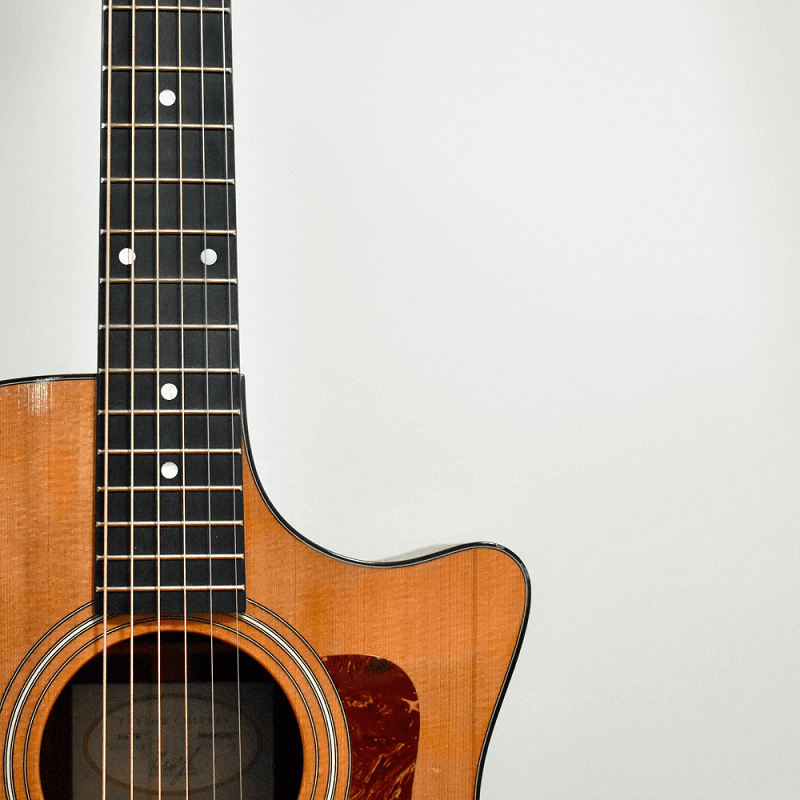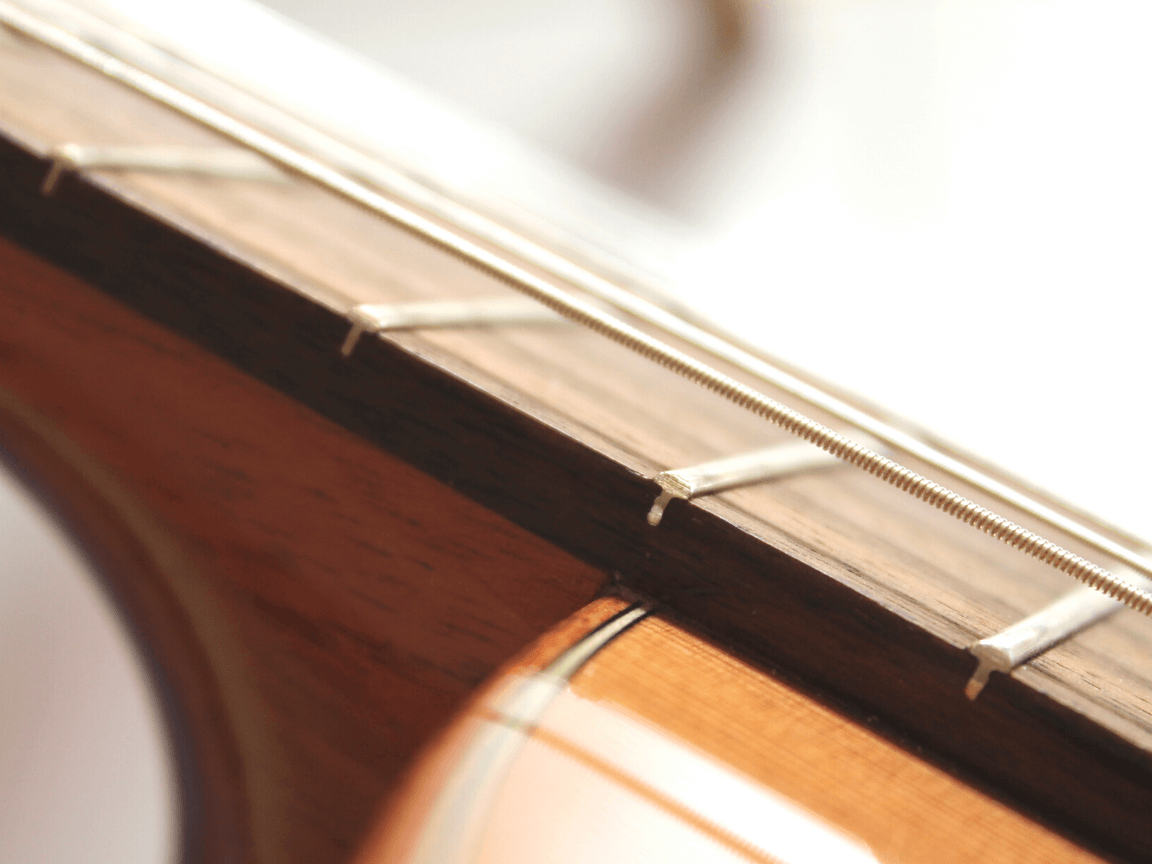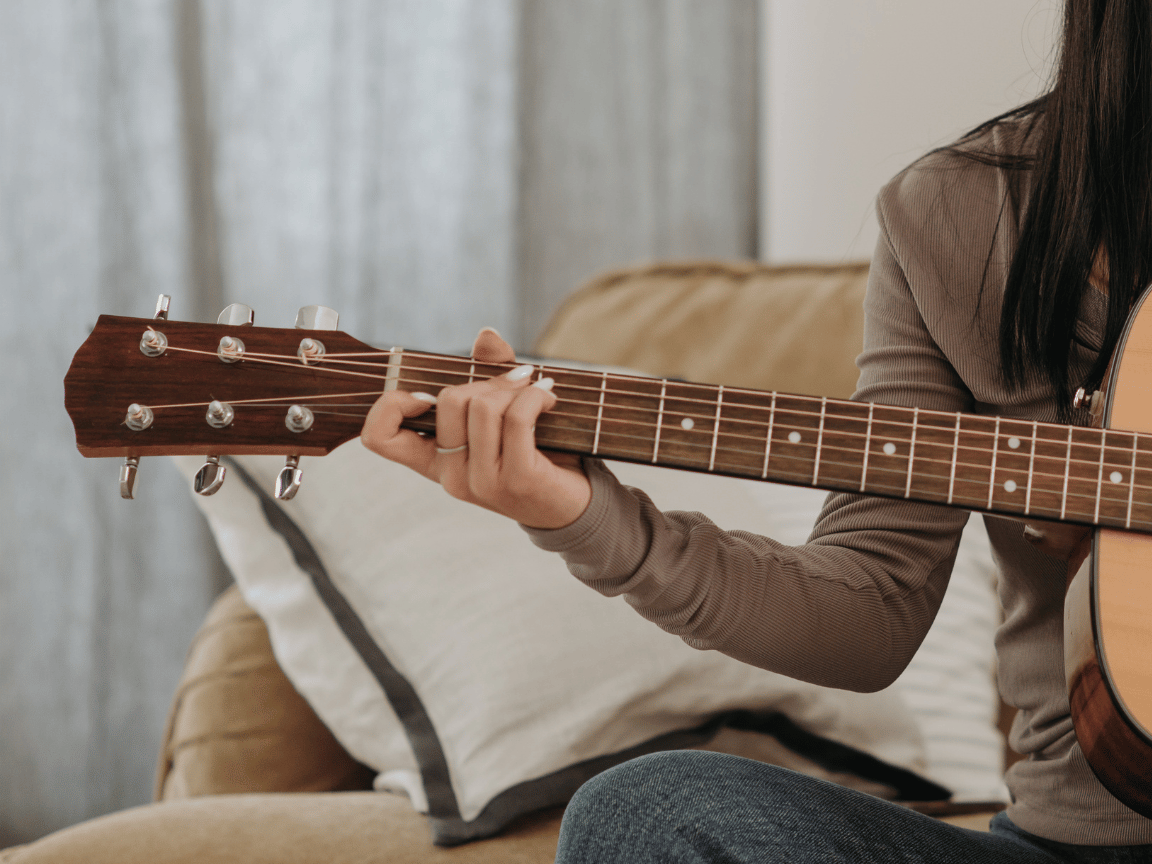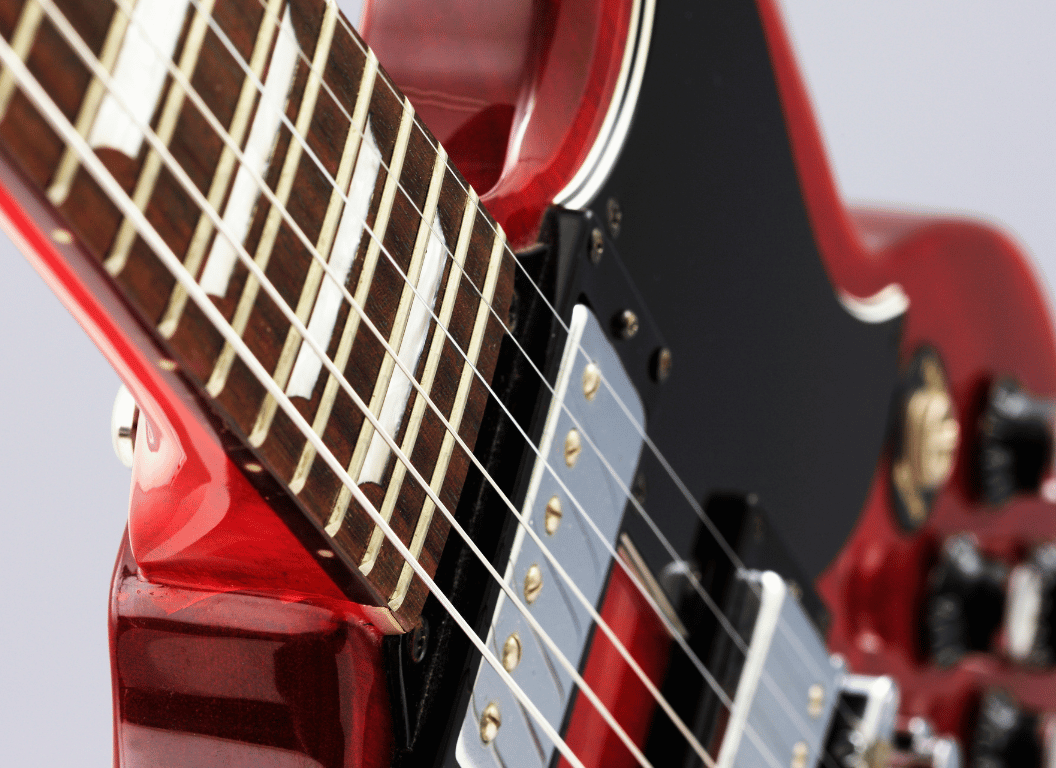Do fretboard woods make any difference in tone?
Well, there are all sorts of variables that go into producing the sound of a guitar.
From the materials used in construction to the strings, to the player’s technique, there are seemingly endless factors that can affect tone.
In this blog post, we’ll take a look at one specific aspect of tone production: fretboard wood.
Some people swear by certain woods, while others say it doesn’t matter at all.
While opinions on this topic vary widely, let’s take a look at the science behind fretboard woods and try to see if we can find an answer.
Table of Contents
- Do Fretboard Woods Make Any Difference In Tone?
- Types of wood used in guitar fretboards and their tone
- How does a guitar fretboard work?
- How to care for your guitar fretboard?
- Which guitar fretboard wood sound best?
- What is a scalloped fretboard? Are they good?
- How many frets does the average guitar fretboard have?
- Can you change/replace your guitar fretboard?
Do Fretboard Woods Make Any Difference In Tone?
The quick answer is that, yes, different woods can have a VERY slight effect on the sound of a guitar. Although this difference is unnoticeable to the average player, it’s important to note that the fretboard is just one small part of the overall equation.
It’s only a difference one would hear when two different fretboard types are played against each other.
Very rarely will you hear a song and be able to tell the fretboard wood that was used, but if you do, you have a great talent.
Also, have in mind that some people are better at hearing some frequencies than others, hence the endless debate on this topic.
That being said, let’s take a look at how different fretboard woods can affect the sound of a guitar.
Types of wood used in guitar fretboards and their tone
In this section, we’ll break down some of the most common types of wood used in guitar fretboards and their respective tones.
With this knowledge, you’ll be able to better select a guitar that suits your playing style.
Rosewood
Rosewood fretboards are known for their warm and rich tones.
They’re often used on guitars that are designed for blues or jazz music, as they tend to bring out the midrange frequencies.

Also, they’re very durable, which makes them a popular choice for live performances.
The history of rosewood fretboards dates back to the early days of guitar construction.
It was one of the first types of wood used in fretboards, and it remains a popular choice today.
Ebony
Ebony fretboards are known for their bright tones and a crisp attack.
They’re often used on guitars that are designed for metal or rock music, as they bring out the high-end frequencies.

Ebony is also a very durable wood and can withstand a lot of wear and tear.
It’s a very smooth wood, which makes it comfortable to play with and reduces the amount of wear on your hands and fingers.
Lastly, these fretboards are very expensive, so they’re often used on high-end guitars.
Maple
Maple fretboards are usually made from hard rock maple and are known for their bright sound and strong mids.
They are a popular choice for guitars and other stringed instruments since this wood tends to be very strong.

At the same time, these fretboards are generally lightweight, which makes them ideal for use in models that need to be kept at a low weight.
Maple fretboards also have a nice, smooth texture that feels good to play on and adds to the playability of the guitar.
Have in mind that there are different types of maple that manufacturers use, these include European flame maple, quilted maple, birdseye maple, and many more.
Walnut
The history of Walnut fretboard is a bit more obscure than the other woods used for fretboards.
It’s said that this was among one of the first materials used in guitars when they were almost entirely out of wood, with some using animal intestines for strings and frets.

It was a popular choice for fretboards up until the 1950s when it started to be replaced by maple and other materials that are better and stronger.
Walnut fretboard guitars for the most part have a warm and mellow tone, which was always great for jazz and blues music.
Indian Laurel
The Indian Laurel tree is a species of evergreen hardwood found in India and other parts of Southeast Asia.
The wood is prized for its density, strength, and durability, making it a popular choice for use in guitar fretboards.

Guitar fretboards made from Indian Laurel are known for their exceptional feel; the wood is dense and smooth which makes it soft to the touch.
When it comes to tone, this wood is also very resonant, which gives it a warm, mellow sound.
Indian Laurel is also relatively affordable, making it a popular choice for guitar builders.
Ovangkol
Ovangkol is a type of wood that is often used in the construction of musical instruments.
It has a beautiful grain that can be utilized for decorative purposes, and it is also a very strong and durable type of wood.

The ovangkol tree is found in the tropical regions of Africa and Asia and shares many of rosewood’s tonal properties.
Among many other things, this includes having a wide spectrum from lows and highs and a smooth feel.
Pau Ferro
What makes this wood such a great choice for instrument fingerboards is its similar sound to that of rosewood, but with an added brightness and bite.
Pau Ferro is a South American tonewood, usually found in Brazil, Bolivia, and Paraguay.

It’s been used as a fingerboard wood on electric guitars for decades and is known for its rich, dark color and fine grain.
Because of new international laws and regulations dictating how rosewood is traded internationally, this wood has seen a big rise in popularity.
Richlite
Richlite is a highly durable, versatile, and sustainable material made from resin-infused paper.
This means it can be used in all sorts of ways to create products that are both stylish as well environmentally friendly!

It seems to have almost the same look and feel as traditional ebony and rosewood fretboards and is incredibly durable.
Such material offers a consistent density that is moisture acclimated, inherently stable and is easy to maintain.
For those that like to customize their instruments, these come in a variety of colors and patterns, so you can find the perfect look for your guitar.
Padauk
Padauk is a type of wood that is reddish-brown and is often used to build guitar fretboards due to its durability, unique color, and texture.
The material is also very smooth, making it easy for your fingers to slide across the fretboard.
It can last for many years with proper care and if you take good care of your guitar and clean the fretboard regularly, you see it age beautifully and develop a rich patina over time.
This wood is typically sourced from Africa, and is often referred to as “African padauk.”
The tree that this material comes from can grow up to 100 feet tall, with a trunk diameter of three to four feet.
Because of its location, and environment, this wood is very dense, which is why it’s so durable.
When it comes to tone, it has a good mix of highs and lows, and the sound doesn’t become muddy as the notes ring out.
Micarta
Micarta is a brand name for composites of linen, fiberglass, canvas, paper, or other fabric in a thermosetting plastic.
This material is used in a variety of applications, from electrical insulation to knife handles and guitar fretboards.
When it comes to guitar fretboards, Micarta offers a very smooth and consistent feel that is easy on the fingers.
It also has great density and stability, so it can withstand changes in temperature and humidity.
The tone is bright and articulate with good sustain, and it doesn’t contain any harmful chemicals.
And many more…
Many different types of woods can be used for guitar fretboards, and each has its own unique set of properties that can affect the tone of your instrument.
Some woods are more durable than others, while some are more resonant and offer a warmer sound.
Ultimately, it comes down to personal preference as to which type of wood you want to use.
Experiment with different types of woods to see what works best for you and your playing style.
Again, remember that although it can affect your tone, the difference tends to be smaller than other factors.
How does a guitar fretboard work?
The fretboard is the flat surface on the neck of a guitar where your fingers press the strings down.
The word “fret” comes from the fact that metal strips called frets are inserted into the wood of the fretboard to divide it into sections.
Such sections determine how high or low the pitch of your string will be when played.
The size and shape of the fretboard can vary depending on the style of the guitar and this affects how easy it is to play certain chords and melodies.
For example, a guitar with a smaller fretboard may be easier to play chords on, while a guitar with a larger fretboard may offer a wider range of notes.
When you pluck a string on a guitar, the vibration of the string travels along the fretboard and is amplified by the pickups or soundhole.
Whatever wood that is used for the fretboard can absorb or reflect vibrations, which can change the sound that is produced.
How to care for your guitar fretboard?
The fretboard is one of the most important parts of the guitar, so it’s important to take care of it!
Here are some tips on how to keep your fretboard in top condition:
- Wipe down your fretboard with a soft cloth after every play session. This will help remove any dirt, sweat, or grime that can build up over time and affect the tone of your instrument.
- Use a toothbrush or other soft-bristled brush to gently remove any debris from the cracks between the frets. Be careful not to damage the finish on your fretboard.
- Apply lemon oil or another type of fretboard conditioner once or twice a year to keep the wood healthy and prevent it from drying out.
- Avoid using harsh chemicals or cleaners on your fretboard, as they can damage the finish or cause the wood to warp.
With proper care, your guitar fretboard will last for many years and provide a smooth, comfortable surface for your fingers to press down on the strings.
Take a look at one of our posts titled: How To Clean A Guitar Fretboard With Household Items?
It will help and guide you on cleaning your guitar fretboard with household items that you most likely already have.
Which guitar fretboard wood sound best?
There is no one-size-fits-all answer to this question.
Ultimately, it comes down to personal preference as to which type of wood you want to use.
I encourage you to watch this YouTube video by Chris Buck:
In this video, he compares a guitar with a Rosewood fretboard to another one with a Maple fretboard.
You’ll be able to learn about the construction methods used in each one of them, and then he plays a demo of both in which you can compare them more easily.
Although the type of wood can make a difference in the tone of your guitar, the difference tends to be small and almost unnoticeable to the average player.
Other more obvious differences between fretboard woods are the feel, look, ease, and versatility.
If you are among the people that can’t hear any differences in tone, then you should use those other criteria to make any buying decision.
What is a scalloped fretboard? Are they good?
A scalloped fretboard is a type of guitar fretboard that has been carved out so that the frets are slightly higher in the middle and lower towards the edges.
This can provide a more comfortable grip for your fingers and also help to increase the sustain of your instrument.
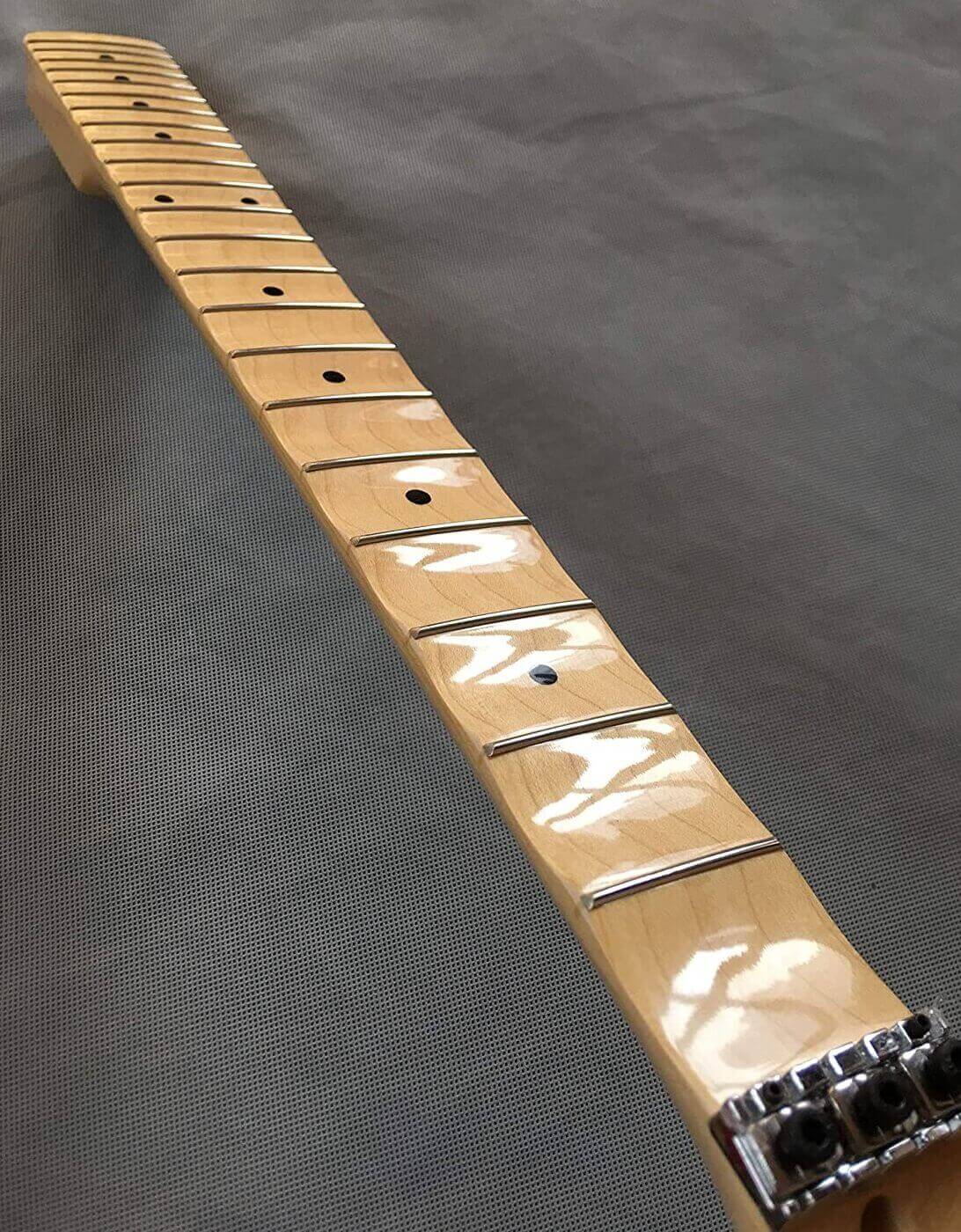
Some players find that scalloped fretboards improve their playing, while others prefer a more traditional flat fretboard.
Those who like it say that the increased grip can make it easier to press down on the strings.
Others find that the added sustain can make their playing sound more musical.
Having a scalloped fretboard is not necessarily better or worse than having a flat one.
How many frets does the average guitar fretboard have?
The average guitar fretboard has approximately 20-22 frets.
However, there are some guitars that have fewer frets, and some that have more.
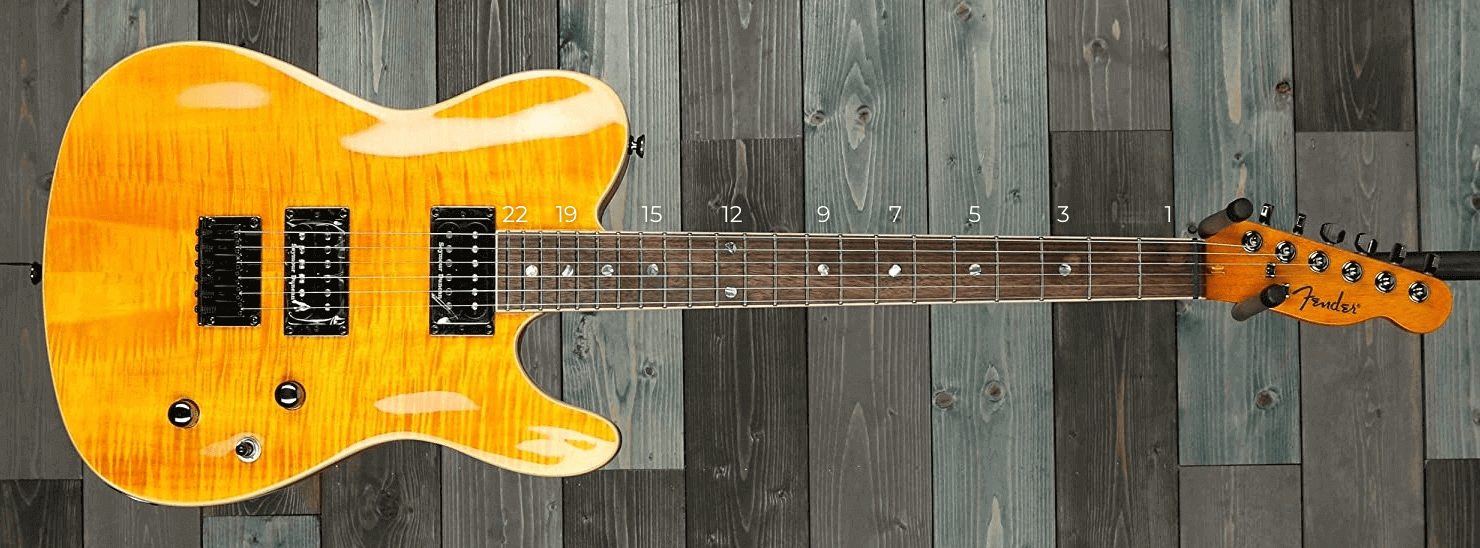
The number of frets on a guitar typically depends on the size and style of the instrument.
For example, a smaller guitar like a parlor guitar may only have 18 frets, while a larger guitar like a jumbo acoustic may have 22 or even 24 frets.
Can you change/replace your guitar fretboard?
The fretboard is one of the most important parts of the guitar, so it’s not something that you should replace lightly.
That said, if you’re experienced with working on guitars, it is possible to replace the fretboard on your own.
However, it’s best to leave this type of work to a professional guitar technician or luthier.
For example, let’s watch this YouTube video by Fabian’s Tiny Workshop:
As you can see, he’s trying to remove a fretboard from a guitar neck to change the truss rod.
Replacing a fretboard is a delicate process that requires precise measurements and careful attention to detail.
If done incorrectly, it can ruin your guitar and decrease its value; this is not something you’d want to do without the right equipment and products.

More than 10 years of experience playing and writing about guitars! When not writing, I can be found strumming away some Johnny Cash tunes. Favorite all time guitar is the Gibson Les Paul. #TeamGibson

